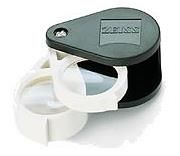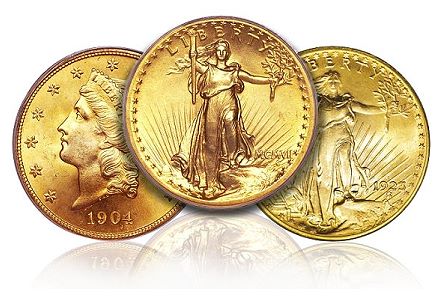by Louis Golino for CoinWeek
This is the first article in a new regular column for Coin Week that will discuss issues and trends in U.S. and world coins. My goal is to keep readers informed about major developments and to provide suggestions for ways to get the most out of your hobby. I welcome reader feedback.
Each article will be oriented around a specific theme or issue. While most of the time I will be reporting on what I see as significant developments that affect the hobby and market, I will also sometimes comment on issues facing the numismatic community such as improving the U.S. Mint’s numismatic operations or whether a proposed coin is a good idea.
 Some of the other subjects I plan to cover include: whether MS70 coins are “value traps”; strategies and suggestions for collecting U.S. and world coins; undervalued coins and potential sleepers; how the precious metals markets affect the coin market; the role of slabbed coins in the current marketplace; how the economy is affecting the coin market; the perennial issue of specializing vs. collecting what looks nice at a given moment; and many others.
Some of the other subjects I plan to cover include: whether MS70 coins are “value traps”; strategies and suggestions for collecting U.S. and world coins; undervalued coins and potential sleepers; how the precious metals markets affect the coin market; the role of slabbed coins in the current marketplace; how the economy is affecting the coin market; the perennial issue of specializing vs. collecting what looks nice at a given moment; and many others.
For this week’s article I would like to discuss an issue which has received some attention in recent months, but which I think is worth revisiting, namely, the market for pre-1933 common-date gold coins. Many dealers, including for example Jim Halperin, co-chairman of Heritage Auctions and a leading numismatic authority and best-selling author, have said in recent months that pre-1933 gold, especially $20 Liberty and St. Gaudens coins, are a good investment at current price levels. The main reason is that the premiums over their gold content are at historic lows, bringing only a quarter of the premium they carried a couple of years ago.
 It is important to study market trends over time to know whether coins are a good buy at a certain level. In the case of pre-1933 gold, one needs to know the reasons why premiums are currently at a nine-year low. According to Mr. Halperin, “These historic low premiums are based on a few different and quite temporary factors, including profit-taking and the somewhat disorderly disbursement of a large hoard of European holdings. It’s certain that these premiums are not going to last.”
It is important to study market trends over time to know whether coins are a good buy at a certain level. In the case of pre-1933 gold, one needs to know the reasons why premiums are currently at a nine-year low. According to Mr. Halperin, “These historic low premiums are based on a few different and quite temporary factors, including profit-taking and the somewhat disorderly disbursement of a large hoard of European holdings. It’s certain that these premiums are not going to last.”
All common gold coins, whether they are bullion or semi-numismatic coins like common-date Saints, carry a premium over melt that is determined not just by the prevailing price of gold per ounce but equally importantly, by supply and demand fundamentals. This is the case even more for pre-1933 gold than it is for most other U.S. coins. Many dealers regularly buy and sell substantial quantities of pre-1933 gold, and prices ebb and flow largely on the basis of the size of their inventories.
In late 2009 when gold reached the $1200 level, these coins were bringing the highest premiums they have brought in recent years, according to Allen Rowe of Northern Nevada Coins. As he explains, telemarketers played an important role in pushing prices higher. At a time when bullion coins were very easily available and their premiums over melt were low, telemarketers and hard-sell coin companies were pushing pre-1933 gold, arguing they are a better investment, in order to make larger profits on their sales.
However, the higher prices led many people to sell pre-1933 generic gold coins, which increased supplies, and eventually lowered prices, especially when combined with the dispersal of European hoards.
A sales tactic used frequently by telemarketers or companies such as Goldline is to explain that when FDR made it illegal to own gold coins, he exempted coins with historic or numismatic value. But as anyone who specializes in $10 and $20 gold pieces will tell you, there are many dates which are very common, and it is debatable how much numismatic value such coins really have. Moreover, the chances the government would once again confiscate gold from U.S. citizens is very low in my view. For one thing, it would be extremely hard to achieve anywhere near the compliance level reached in the 1930’s.
To be sure, a 1925 St. Gauden coin is much more beautiful than a bullion coin and has historic value. But unless you own better or at least slightly better date coins, they are common in grades as high as MS65. As Harry Miller, coin market analyst for Numismatic News argues, “The real trick in this area of the market is to find the mintmarked or earlier dates at just a little more premium. These items will often represent a scarcity of 50 or 100 to 1 over the most common coins.”
Laura Sperber of Legend Numismatics has frequently made a similar argument, suggesting that collectors and investors spend their money on better-date coins, which she believes will perform better over time than generics. In addition, less common coins tends to have more stable values because their prices are not as closely tied to the price of gold. Ms. Sperber has also often stressed the fact that quality is a key factor when purchasing these type of coins. I remember how last year, for example, when I spoke with her at one of the Baltimore Expo coin shows, she stressed the point that a lot of the generic gold she came across was what she referred to as “dreck” to be avoid at all costs.
Clearly, not all 1904 MS63 Liberty $20 coins, for example, are of the same quality. As with all coins, there are significant variations in strike, luster, number and severity of contact marks, and other factors which need to be considered. Attend a major coin show and study the inventories that dealers bring with them, and you will see a wide variety of quality even for the same dealer’s stock of a particular date.
I believe that these coins will at some point, probably later this year, begin to trend back up. Currently premiums on many bullion coins are relatively high because of the high demand for such coins among gold investors, but smart investors will discover that pre-1933 gold is a much better deal at current levels, especially $10 Indians graded MS63 and higher and double eagles graded MS62-64.
Gold is expected to do well in the coming months, as international and domestic economic headwinds and financial uncertainty increase. While it is impossible to predict when it will happen, rising gold prices will at some point once again put upward pressure on pre-1933 gold. These coins can not remain such a bargain forever, and there is little risk in buying now in my view. But go for the best quality and best dates you can afford.
Louis Golino is a coin collector and numismatic writer, whose articles on coins have appeared in Coin World, Numismatic News, and a number of different coin web sites. He collects U.S. and European coins and is a member of the ANA, PCGS, NGC, and CAC. He has also worked for the U.S. Library of Congress and has been a syndicated columnist and news analyst on international affairs for a wide variety of newspapers and web sites.





Most of the investors invest in pure gold with less premium value.If pre-1933 gold coin has less premium then either it is pure like 24kt gold coin or not?
It is not the case that pre-1933 gold has lower premiums than 24K gold bullion coins, which also definitely have more gold content than older US coins. I was only explaining that the premiums are lower now than they have been in a long time and that most people believe they will increase before long. If you are going for a pure gold play, you probably want bullion coins like Kruggerrands, Maple Leafs, etc. But right now you will pay a realtively high premium over spot price for those coins.
Hey Louis, welcome to CoinWeek. I look forward to reading your articles. I’m with Laura, I think rarities are the way to go.
Thanks a lot, John. I appreciate your interest in my articles.
Mr. Golino’s article and comments on coins for the serious collector and investor are most welcome. Keep up the good work!